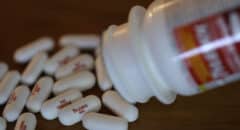
The internet is overflowing with wellness trends, viral health hacks, and so-called “natural” solutions—often marketed as quick fixes for everything from bloating to chronic disease. On platforms like TikTok, Instagram, and YouTube, these remedies can spread at lightning speed, gaining millions of views before experts have a chance to weigh in.
The problem? Not all of these tips are harmless experiments. Some can waste your money, delay proper treatment, or even cause real harm to your health. For example, detox teas labeled as “all-natural” may lead to dehydration, while unproven supplements can interfere with prescription medications. Even seemingly simple hacks, like drinking large amounts of lemon water or trying extreme “immune boosting” diets, can backfire when taken to extremes.
What makes this especially tricky is that misinformation often comes wrapped in an appealing package: personal testimonials, sleek branding, and language that promises “ancient wisdom” or “science they don’t want you to know.” These tactics play on our desire for control over our health, especially when traditional medicine feels slow, expensive, or impersonal.
That’s why learning how to spot red flags in wellness advice is more important than ever. Below, we’ll break down strategies to help you separate trustworthy information from misleading claims—before those trends truly harm you.
RELATED: Who Regulates Wellness Influencers—And Should They?
Red Flags in Viral Health Hacks
Dramatic claims with little basis
Headlines like “doctors don’t want you to know this cure” or “the cure they’re hiding” are classic clickbait designed to provoke emotion—not truth. Run, don’t click.
Anecdotes over evidence
If the advice leans heavily on personal testimonials—“I used this and it cured me”—that’s often a red flag. Personal experience doesn’t replace scientific validity.
Too good to be true
Claims like “quick weight loss,” “detox in one week,” or miracle “nutrition secrets” often oversimplify or misrepresent science. If it sounds unbelievable, it probably is.
Viral ≠ valid
Social media virality doesn’t guarantee accuracy. Some TikTok health content is so misleading, it’s harmful. About two percent of viral nutrition hacks align with public health guidelines.
Hidden agenda: Follow the money
If the source is selling a product—especially via affiliate links or online shops—it’s likely biased. Often, financial gain takes priority over your well-being.

Why “Natural” Doesn’t Always Mean Safe
One of the biggest traps in online wellness culture is the belief that if something is labeled “natural,” it must be harmless or even automatically good for you. This assumption is not only misleading, but it can also be dangerous.
The Marketing of “Natural”
The word natural is often used as a marketing hook rather than a scientific classification. In the U.S., for example, the Food and Drug Administration (FDA) does not have a strict definition for the term “natural” when used on supplements or health products (FDA). This leaves plenty of room for companies to imply safety or health benefits without proving them.
Natural ≠ Harmless
- Plants can be toxic: Poison ivy, hemlock, and certain mushrooms are all natural but extremely harmful—even fatal—if ingested.
- Herbal supplements may interact with medications: St. John’s Wort, a popular natural mood enhancer, can interfere with birth control pills, antidepressants, and blood thinners
- “Detox” teas and laxatives: Often marketed as natural cleanses, these can cause dehydration, electrolyte imbalance, and even dependence with overuse.
Dosage Matters
Even beneficial natural substances can be harmful in high doses:
- Vitamin A from natural sources is essential for vision and immunity, but excess intake during pregnancy can increase the risk of birth defects.
- Green tea extract is natural and rich in antioxidants, yet in concentrated supplement form, it has been linked to liver damage in rare cases.
Cultural and Traditional Medicines
It’s also important to approach traditional remedies with respect but caution. Many natural treatments from African, Indigenous, and Asian traditions carry real wisdom and effectiveness—but when commercialized for profit, they can be stripped of context, mislabeled, or used in unsafe ways. For example, certain herbal tonics used traditionally in small, supervised doses can be risky when mass-produced and self-administered.
“Natural” is not a guarantee of safety. Just like synthetic medications, natural remedies can have side effects, interactions, and risks. The key is not to dismiss natural options altogether, but to evaluate them with the same critical eye you would for any other health product: check research, talk to a qualified provider, and remember that more “natural” does not always mean safer—or more effective.

Trusted Sources You Can Count On
When seeking health information, turn to reliable, credible institutions:
- .gov and .edu domains
U.S. federal agencies (CDC, NIH) and universities generally offer accurate, up-to-date information. Websites ending in .gov or .edu are a good signal of quality. - MedlinePlus (medlineplus.gov)
A trusted, consumer-focused health portal from the National Library of Medicine and NIH. Provides vetted information on thousands of topics. - CDC (cdc.gov)
Authoritative guidance on public health issues, disease prevention, and health emergencies. - Mayo Clinic, Harvard Health Publishing
These authoritative sources produce evidence-based content with oversight from qualified professionals. - RxList, Drugs.com
For reliable info on medications, side effects, and interactions, these pharmaceutical reference sites remain valuable. - Vaccine Safety Net (by WHO)
A curated network of credible sites offering accurate vaccine-related content. Ensures content meets high standards for quality and transparency.
RELATED: Navigating Health Misinformation: Tips For Finding Reliable Information
How to Fact-Check Before You Try
Before implementing any wellness advice you encounter online, follow these steps:
Evaluate the source
- Look for credentials: reputable organizations, expert editorial boards, and clear funding sources.
- Beware of generic titles like “nutritionist,” which aren’t always regulated. Registered dietitians are far more credible.
Inspect the website and URL
- Trust reputable domains and watch for mimicry like “cdc.org” vs. “cdc.gov.” Secure sites show “HTTPS” and a padlock icon.
- Unprofessional design, typos, or flashy layouts can signal unreliable content.
Check for scientific support
- Reliable articles cite studies, link to peer-reviewed journals, or include expert opinions. Look for clear references and recent updates.
Cross-verify with trusted sources
- Confirm the advice with sites like NIH, CDC, Mayo Clinic, or professional health organizations.
Pause before sharing
- A surprising claim that triggers strong emotion? Take a moment and dig in further before accepting or sharing.
Consult a healthcare provider
- Your health decisions should never be based solely on social media. Verify with your doctor or a qualified health professional.
Be mindful of the “infodemic” effect
- Misinformation spreads quickly and widely—especially during crises. Recognizing this dynamic can help you stay cautious.
In today’s digital age, wellness misinformation can spread fast—and go viral—while carrying serious risks. Recognizing red flags like anecdotal claims, “natural is always best” messaging, and sensational headlines is a vital defense. Instead, rely on credible expert sources like government agencies, trusted nonprofits, and established medical institutions—always fact-check, cross-reference, and when in doubt, seek the guidance of a healthcare professional.
Protect your wellness by staying informed, skeptical of sensationalism, and grounded in evidence.






